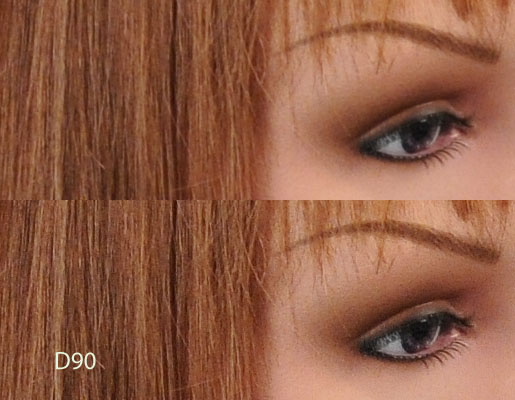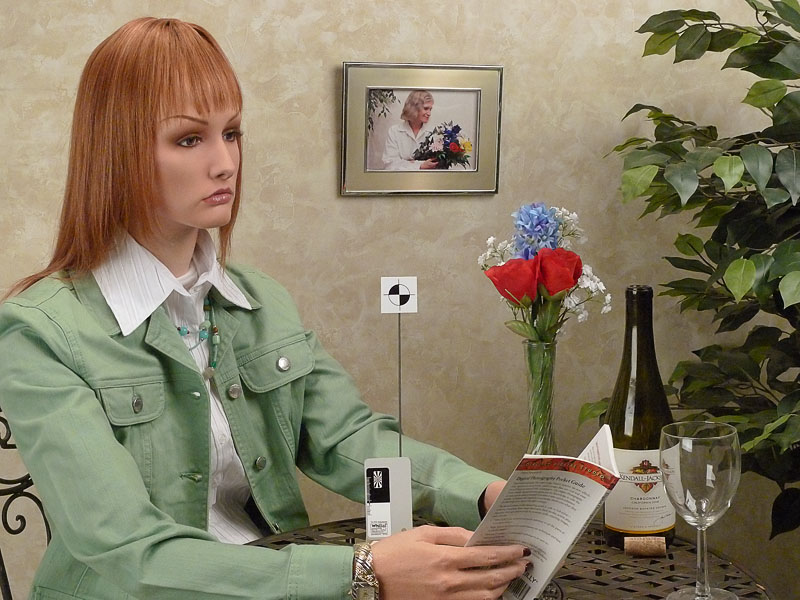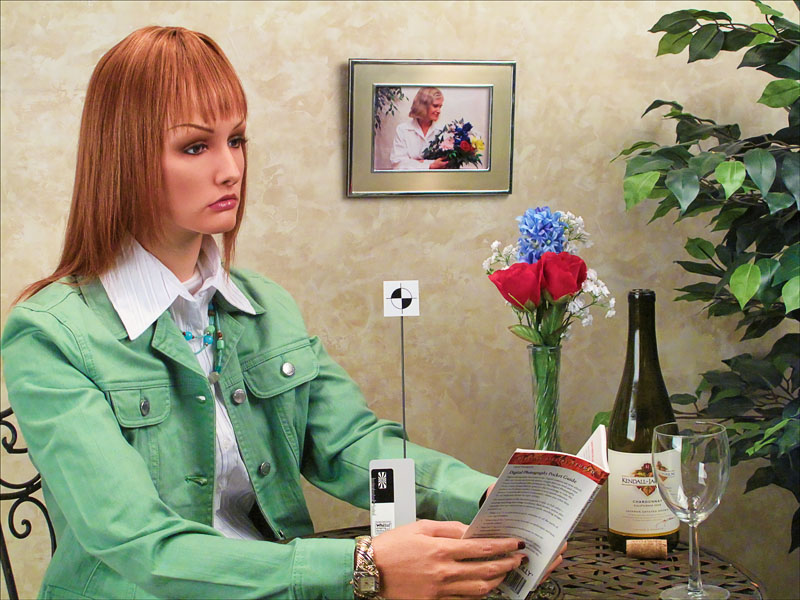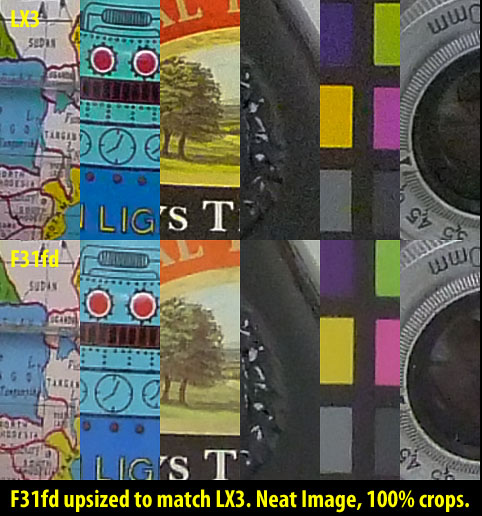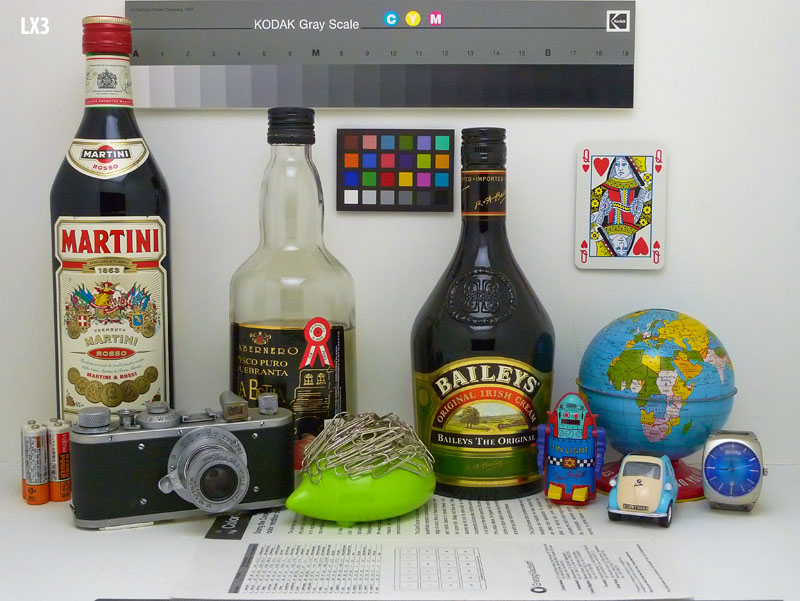James came on close to 9:30pm and played a fairly short set. It was all over before 11pm, but it was very enjoyable. This is my first time seeing him and my first impression is that he is a very good entertainer. Solid guitar, extremely good piano and of course magnificent voice. If you don't have his CD "All the Lost Souls" I heartedly recommend it.
I did find his voice a bit strained. He had some trouble reaching the high notes, his bread and butter, without cracking or falling off the notes, but he held on for the whole concert and the power parts of the songs came through loud and clear. I suspect he's been on tour for a while, although I have not checked.
The light show was decent, but both sets were poorly lit for photography. Of course, I was in a suite on the 100 level and was further from the band than any other time where I've had a camera with me, so the emphasis on spots with weak ambient coupled with the distance from the subjects was a real challenge.
And I got an early Christmas present about 5 hours before the concert ... the Canon Powershot G10. I brought that camera and my usual concert camera, the Fujifilm Finepix F11, along to test them head to head.
The G10 is a real shooter's camera .... the controls are very good and it is easy to change anything you want in a few seconds ... even though this was my first time shooting the camera. The F11 is ok in that way, because I've shot many thousand images with it ... but I didn't waste much time with it after feeling the G10 in my hands. Wow ...
The F11 is one of the Fxx series of Fuji cameras that is renowned for their high ISO prowess. They can shoot fairly clean images up to 1600 ISO (3200 is really just a joke in compact cameras) but they sacrifice a lot of fine detail. The G10 theoretically sacrifices more than that, with poor saturation and all kinds of noise from a sensor that has more than double the pixels of the F11.
So I shouldn't even bother, right?
Not so fast. Take a look at this article and you will see why I was willing to give the G10 a test drive (I have until 5 January 2009 to bring it back, a very good policy from Future Shop and one reason I buy from them a lot.)
I managed to shoot only jpegs at this concert, despite the fact that I wanted to shoot RAW images as well. I failed to read that part of the manual before the concert and simply could not find the setting. I did not have my reading glasses with me and did not see the tiny arrow indicating that there were more sizes off the page ... *sigh* ...
But that makes this an even better test. If the images look good at higher ISO in jpeg, I *know* that they will look even better in RAW later on. Note also that both cameras were shot in normal jpeg compression ... approximately 12:1 on the F11, not sure on the Canon. This is still excellent, and I did not find jpeg artifacts to be visible during my processing.
So .... without further adieu, let's see the opening act, Luc Ducet.
This was one of my first images ever with the G10 ... and I shot it at 1600ISO, committing heresy :-) ... it's not great, but it's not terrible either. Remember to click to see the larger version of images on my blog.
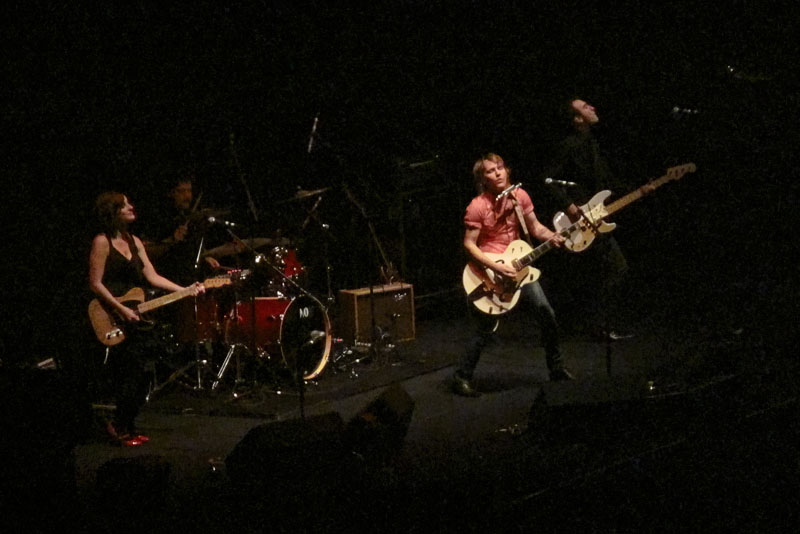
Here's a similar image shot at 400 ISO for comparison. A bit more detail visible here.
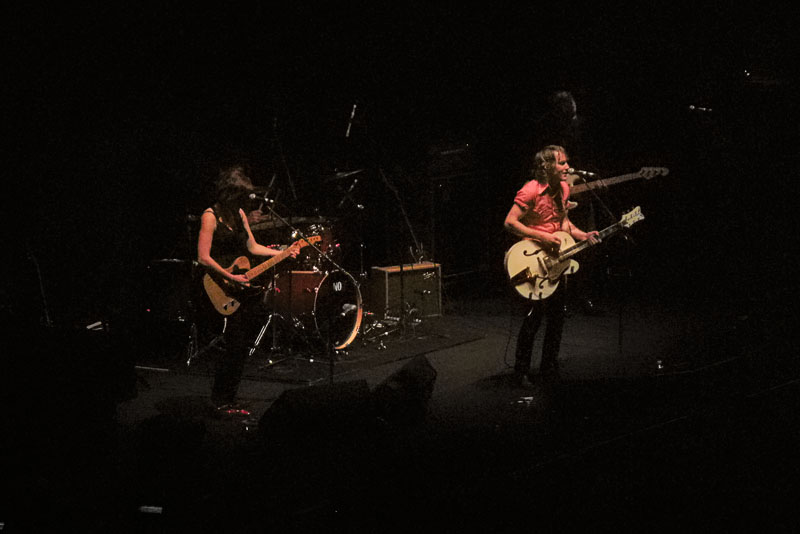
You might be wondering how I shot the same images with ISOs 2 stops apart. Simple enough ... I use Tv mode and set the shutter speed to a fixed value, usually around 1/100s. I have found empirically over many concerts that 1/100s is usually enough to freeze a singer standing in front of a microphone.
For comparison purposes, here is a Fuji F11 image at 800 ISO. Not as nice in my opinion -- good detail, which is always a Fuji strength, but a lot of banding and other noise related artifacts. And white balance and saturation are awful. I was quite surprised. The light was perhaps a bit dimmer than for the other shots .... I don't recall.
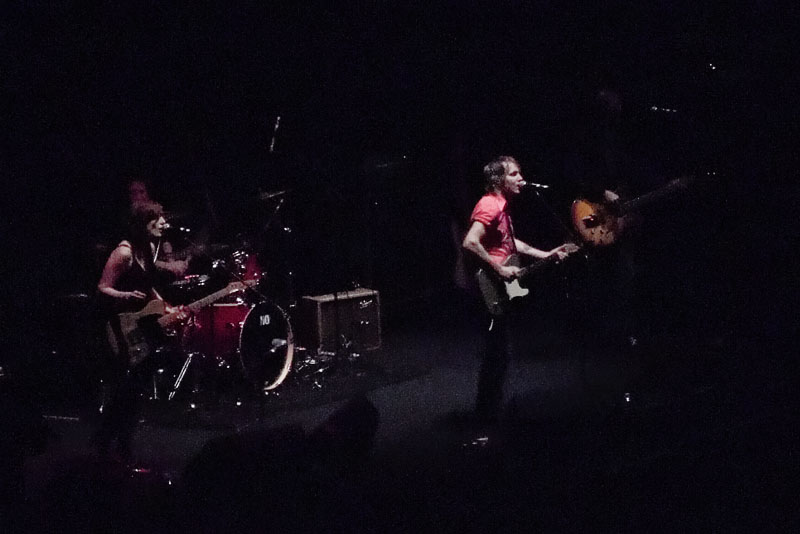
When James came on, I recorded video for the first 10 minutes. I gotta say that the long reach of the G10 lens and the superb IS makes for a smokin' video recorder. And it is so cool that they use the H.264 codec instead of the awful motion jpeg codecs used by Fuji and so many others.
Here is the first shot I made of him, again inexplicably at 1600ISO. It was pretty dark, only blue spotlights ... sheesh, what brutal lighting for a digicam. Again, not great, but not terrible. In fact, I am pretty pleased.
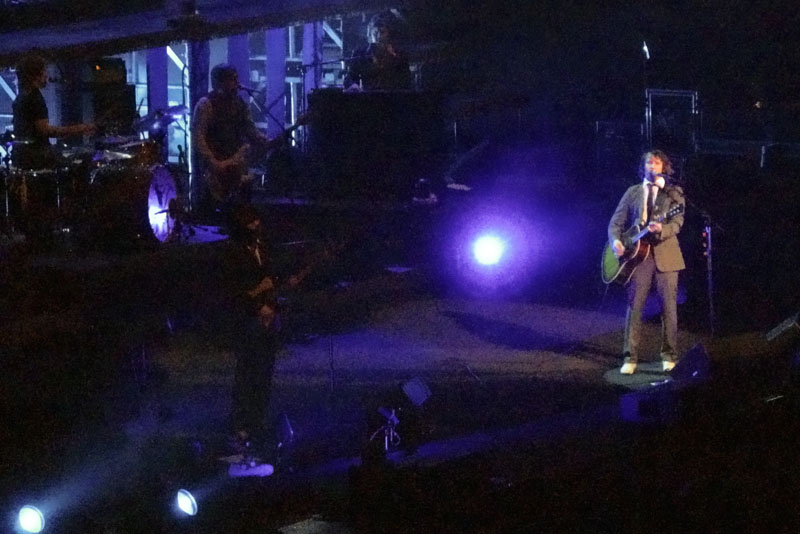
I went on to capture quite a few images, some even as low as 200 ISO. The ISO dial is so easy to use that it begs you to experiment ... and I did. 200ISO creates really dark images, but the quality of the pixels in the G10 is pretty high at that ISO. To be clear, these are snap shots, memories, social shots. They are not portraits and could not be enlarged except in a artistic fashion ... of course, I have no legal right to profit from these anyway. My point being that the quality of these need only stand up to the web ... and they certainly do that as a group in my opinion.
Where was I? Oh yeah ... the 200 ISO image. Very, very clean. I was so pleased when I saw this one come up in Bridge.
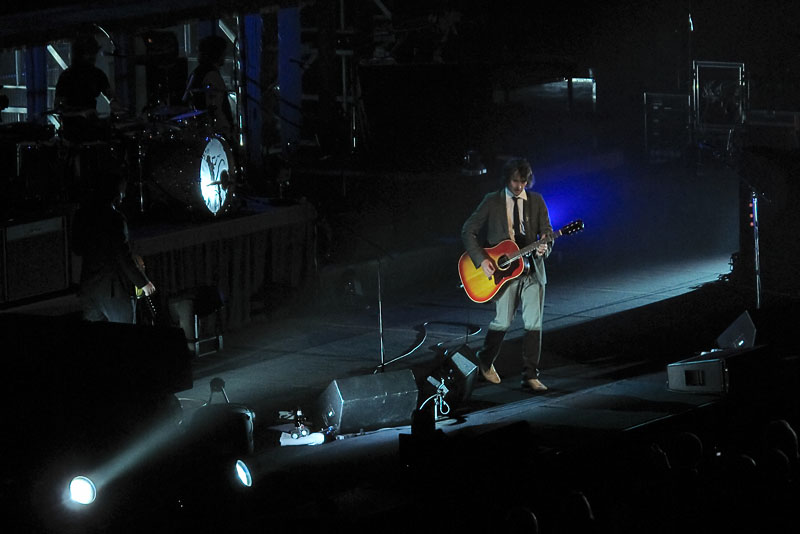
That's shot from over a hundred feet away! And here is a fairly close crop of the image ... showing that there is some detail in there. All 6 strings are visible, I believe.
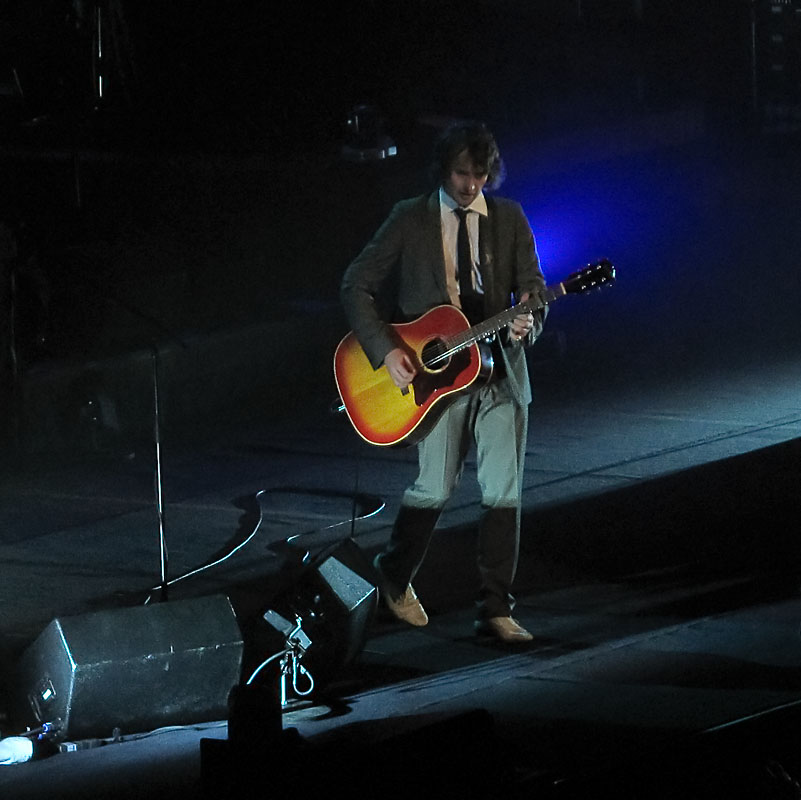
I will close with a few more from the part of the set where he runs through the audience giving hugs and then jumps into a secondary stage with a piano that he plays for several songs. Also far away from me and poorly lit.
To see the whole set of about 30 images, go here.
Here he is on the secondary stage, shot at 400 ISO. The people are all visible, as there was a bit more light on them at that moment. Made for some nice ambiance in the shot. Note the sharpness of the security guy's face on the far left. And note also that this was shot at 1/8s ... kudos to the IS in the G10 ...
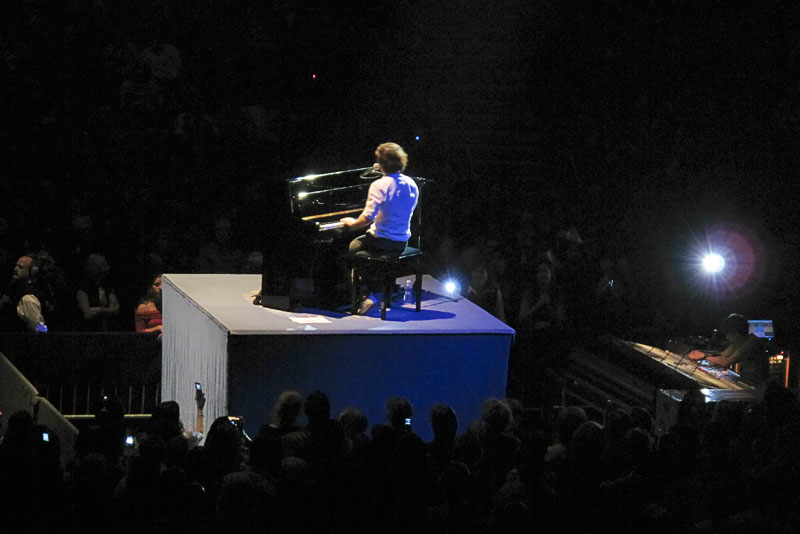
Here is one a short time later with the Fuji. Shot at the higher ISO (800) and faster shutter speed (1/100s) makes it decently sharp. It actually looks quite nice.
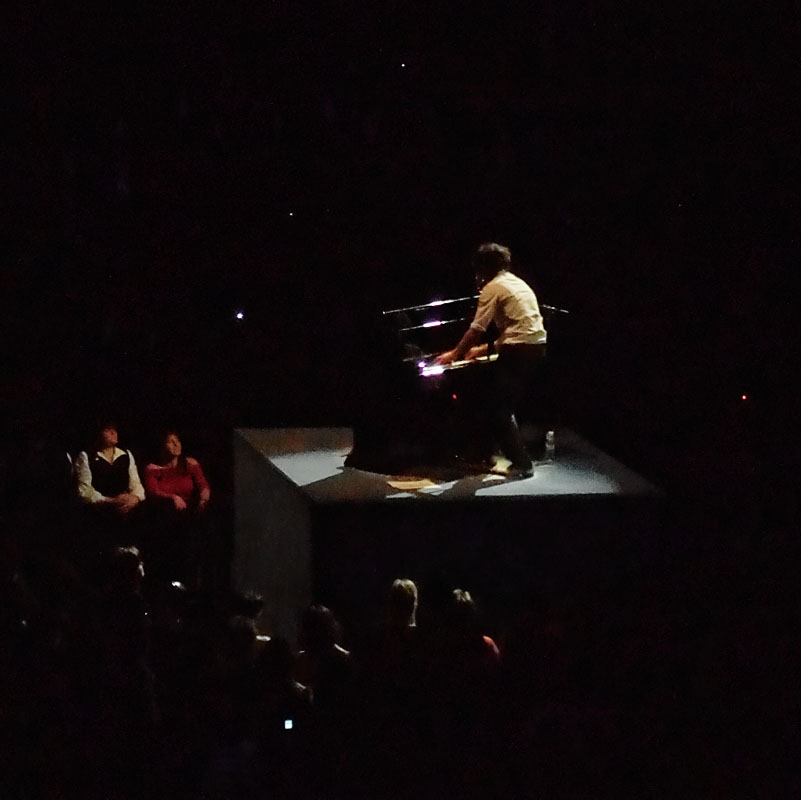
Here's a wide shot from the Fuji, showing the stage at the other end of the arena and the one spotlight shining down. Decent amount of ambient light allows me to show the audience. This one started pretty dark and the result is a little harsh looking. Still, not bad, especially when you consider it is shot at 1600 ISO.
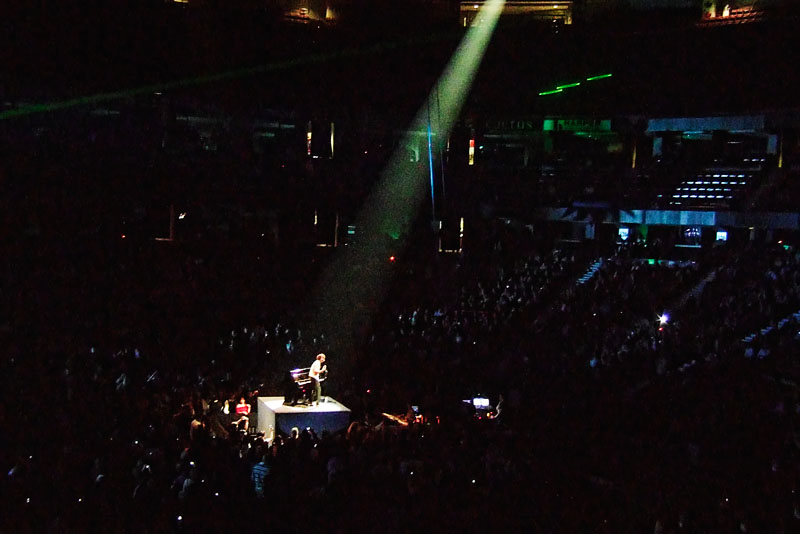
Back to the Canon. With the very wide 28mm lens, I was able to capture a really nice ambient shot. This is a portrait crop from a wide landscape image, shot at 400 ISO (I inadvertently reported this as 1600 ISO when I first posted this blog entry), and is far smoother. IS helped with that, and there are a lot more pixels to work with and they are at a fairly high quality, despite the incredibly tiny photosites. And I didn't even shoot this in RAW :-)
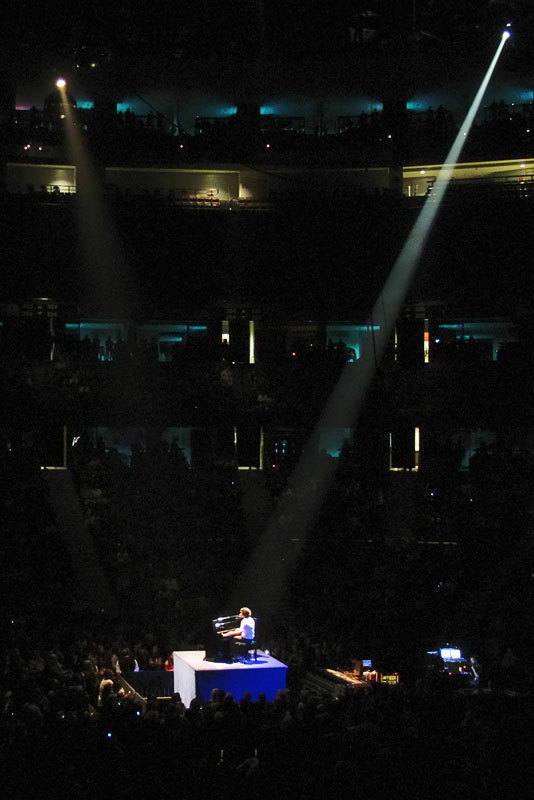
Ok ... one more for the road. Here's a 400 ISO image from the G10 ... quite clean, a fairly strong crop, yet quite clean and detailed. Look at the faces in the audience to see what I mean. So clean!
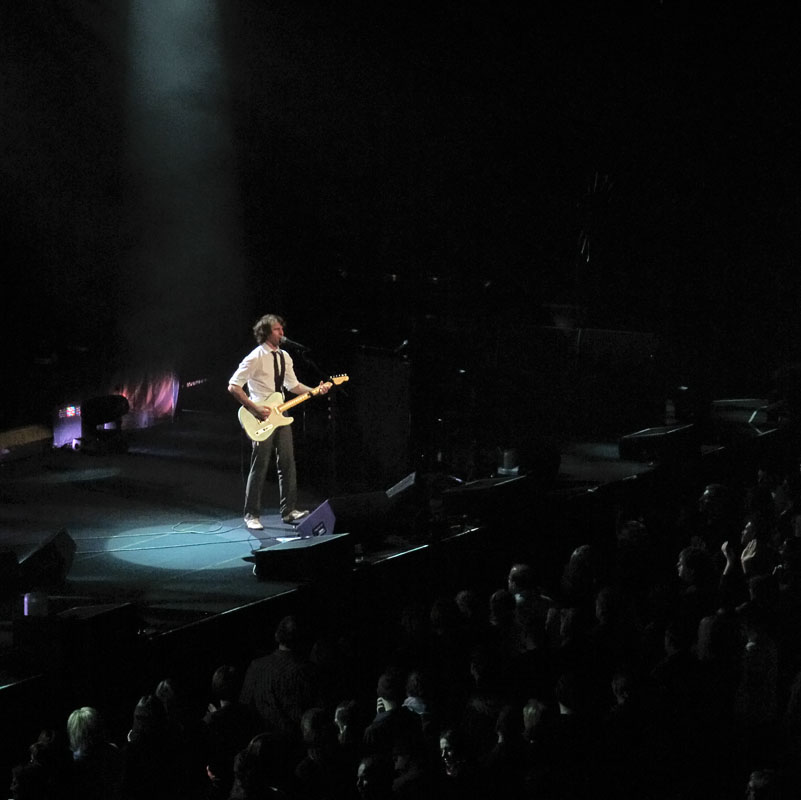
Great concert. I'll update this blog with the video when I have processed it and uploaded to YouTube. Meanwhile, go see either Luc Ducet or James Blunt (and if you are really lucky, both) if you get a chance.
And consider the G10 for your every day shooter. Fits in a (fairly big) pocket and this things rocks!

